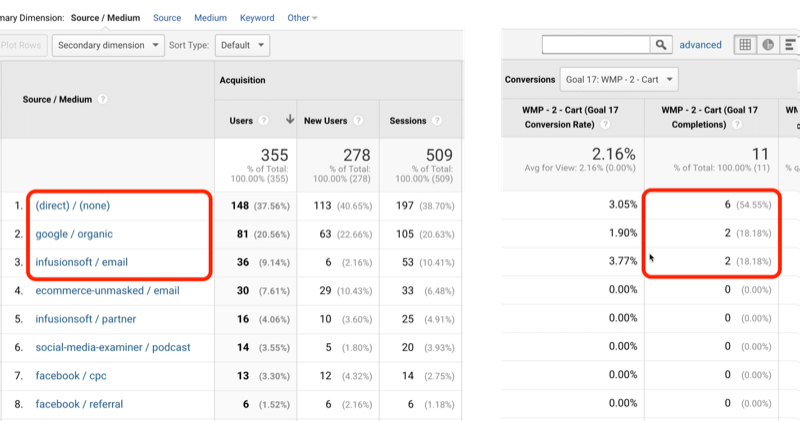Discovering What Data Is Google Analytics Goals Unable to Track
Discovering What Data Is Google Analytics Goals Unable to Track
Blog Article
Revealing the Blind Destinations: Recognizing What Google Analytics Goals Can not Gauge
In the world of digital analytics, Google Analytics stands as an effective device for tracking and analyzing on-line individual interactions. Recognizing what Google Analytics objectives can not gauge is important for obtaining a comprehensive view of individual behavior and involvement.
User Behavior on External Platforms
Recognizing how customers engage on outside platforms is critical for enhancing online approaches. Outside platforms, such as social media networks, recommendation websites, and on-line forums, play a substantial duty in driving web traffic to a company's web site. By analyzing individual behavior on these platforms, businesses can get important understandings into the efficiency of their advertising and marketing efforts and the choices of their target audience.
One secret facet of user habits on outside systems is the reference source. By tracking where the customers are originating from, services can identify which platforms are driving one of the most traffic to their internet site. This information can assist firms allocate their resources better, focusing on the platforms that produce the most effective results.

Offline Conversions and Communications
Assessing individual behavior on external platforms provides valuable insights right into on the internet approaches; nonetheless, considering offline conversions and communications is just as essential for an extensive understanding of a firm's general performance. While Google Analytics excels at tracking online communications, it drops brief in catching the total customer journey that often includes offline touchpoints. Offline conversions, such as in-store acquisitions or phone queries, play a significant role in many organizations' success. Neglecting these interactions can result in an altered view of the effectiveness of marketing projects and general company performance.

Attribution Beyond Last Click
When diving into the world of electronic advertising and marketing analytics, it ends up being necessary to look beyond the solitary touchpoint of the last click for an extra thorough understanding of attribution. While Google Analytics supplies beneficial understandings into user habits, depending exclusively on last-click acknowledgment can be limiting - what data is google analytics goals unable to track. Attribution models that go beyond the last click use an extra nuanced view of the consumer trip, taking right into account all the touchpoints that lead to a conversion
Attribution beyond the last click allows online marketers to assign credit history to different interactions along the conversion path, offering a more clear picture of the effectiveness of various advertising and marketing click here for more networks. By checking out multi-touch attribution versions such as direct, time degeneration, or position-based attribution, businesses can much better allot their advertising budget plans and optimize their strategies for maximum influence.
Comprehending the influence of each touchpoint in the conversion procedure is critical for making notified decisions and making the most of ROI. By welcoming acknowledgment beyond the last click, companies can gain much deeper insights right into client behavior and customize their advertising initiatives better.
Cross-Device and Cross-Browser Monitoring

Likewise, cross-browser monitoring complements cross-device tracking by catching customer actions as they switch between various internet internet browsers. Understanding how individuals connect with internet sites on various browsers can assist online marketers enhance their on the internet experiences to make sure uniformity and capability throughout different systems.
Qualitative Data and Individual Intent
Comprehending user intent with qualitative information analysis is essential Resources for creating targeted electronic marketing techniques that resonate with the needs and preferences of the target audience. Qualitative data offers insights into the 'why' behind user activities, losing light on inspirations, feelings, and preferences that quantitative data alone can not catch. By examining individual responses, remarks, and interactions, marketing experts can reveal beneficial details regarding individual intent, allowing them to customize their messaging, web content, and offerings to much better straighten with what their target market is seeking.
Qualitative data additionally assists in comprehending the context in which users involve with an internet site or application. This contextual understanding allows marketers to create even more pertinent and customized experiences, ultimately driving greater interaction and conversion rates. By diving into user intent through qualitative data evaluation, companies can gain a much deeper understanding of their target audience, bring about a lot more reliable marketing approaches that satisfy users' demands and expectations.
Verdict
Finally, Google Analytics objectives have restrictions in measuring individual actions on outside systems, offline conversions, attribution past last click, cross-browser and cross-device tracking, and qualitative information related to individual intent. what data is google analytics goals unable to track. It is necessary for services to be knowledgeable about these unseen areas in order to supplement their information analysis with other devices and techniques to get a much more extensive understanding of their target market and boost their general electronic marketing techniques
By assessing user habits on these systems, businesses can acquire beneficial understandings into the efficiency of their advertising and marketing initiatives and the preferences of their target audience.
Evaluating individual behavior on outside systems provides important insights into on the internet approaches; however, thinking about offline conversions go and communications is just as crucial for a thorough understanding of a company's overall performance.In digital marketing analytics, moving beyond last-click attribution to check out cross-device and cross-browser tracking is vital for getting an all natural understanding of customer communications across different platforms and devices. By evaluating user feedback, comments, and communications, online marketers can uncover valuable details about user intent, allowing them to customize their messaging, web content, and offerings to much better line up with what their target market is seeking.
By delving into customer intent via qualitative data analysis, businesses can gain a deeper understanding of their target audience, leading to extra reliable advertising techniques that meet customers' demands and expectations.
Report this page